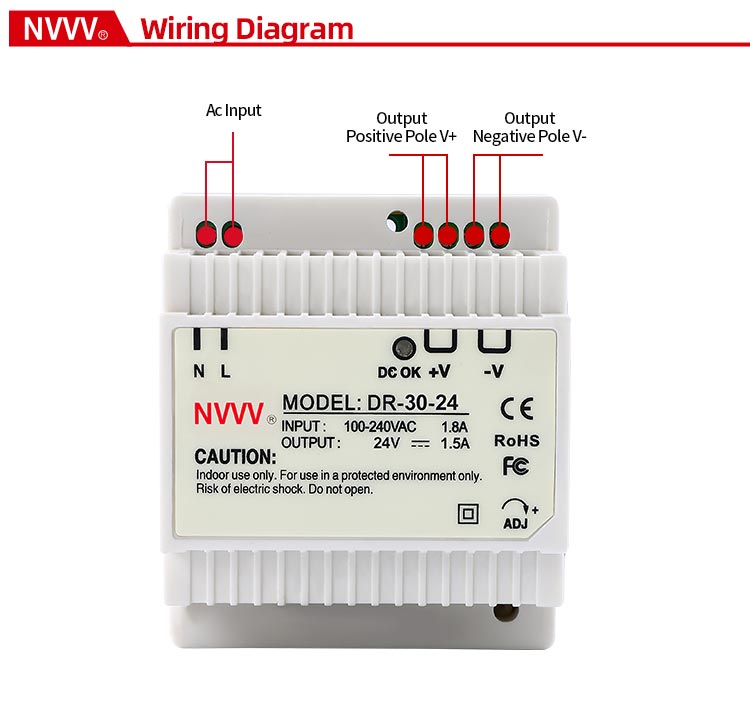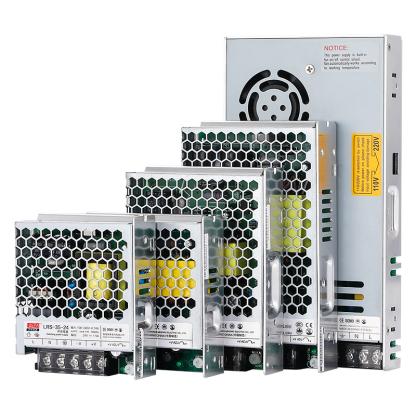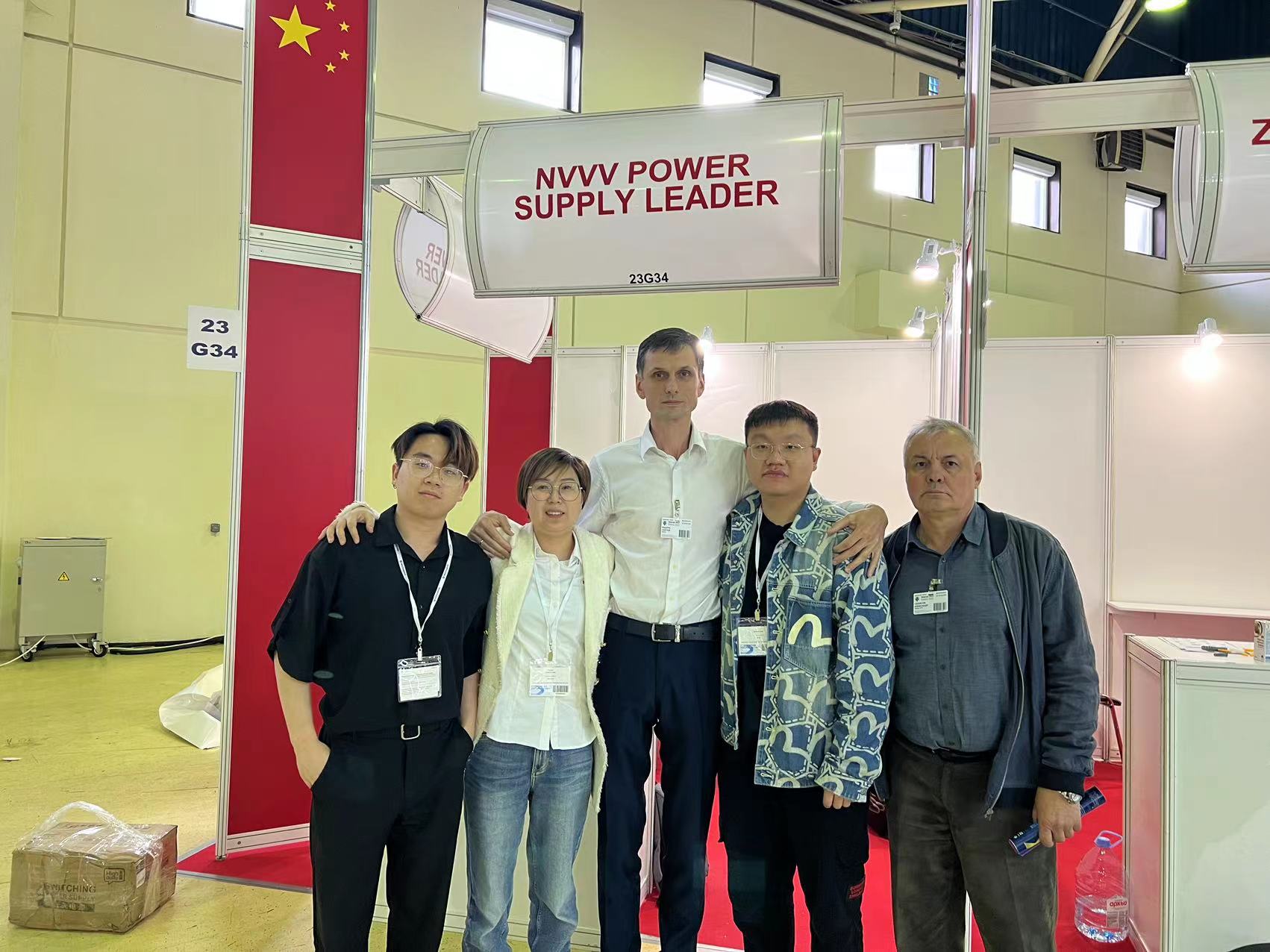How to Choose the Right DIN Rail Switching mode power supply?
A DIN rail power supply, also known as a DIN rail SMPS (Switched-Mode Power Supply), plays a vital role in industrial applications. It stabilizes input voltage, ensuring a reliable and efficient power supply for control systems, machinery, and distribution panels. With high efficiency, compact size, and easy installation, DIN rail SMPS units are widely used in industrial power management.
Selecting the right DIN rail SMPS is essential for smooth operation, cost-effectiveness, and long-term reliability. In this guide, we will explore the important factors that should be considered to help you make an informed choice.
What is a DIN Rail Switching power supply?
A DIN rail SMPS is a power supply unit that converts unstable input voltage into a stable and regulated DC output. Designed to be mounted on a standardized DIN rail (TS 35), it is a compact and efficient power solution commonly found in industrial control panels.
These power supplies stand out for their ease of installation, high power efficiency, and space-saving design. By reducing heat generation and energy loss, they provide a cost-effective and environmentally friendly power source for automation systems.
Why Choose a DIN Rail SMPS?
Unlike traditional power supplies, DIN rail switching mode power supply units offer numerous advantages:
-
Higher Efficiency: Most modern models exceed 90% efficiency, reducing power consumption and heat dissipation.
-
Space Optimization: The compact design makes them ideal for control cabinets and confined spaces.
-
Simple and Quick Installation: Tool-free wiring and snap-on mounting make installation effortless.
-
Long Lifespan: Designed for industrial use, these power supplies require minimal maintenance and last longer.
-
Flexibility and Scalability: Suitable for modular system expansion in industrial applications.
Key Factors to Consider When Choosing a DIN Rail SMPS
1. Input and Output Requirements
Before selecting a power supply, it is crucial to evaluate its input and output parameters:
- Input Voltage Compatibility: Determine whether your system requires a single-phase (100–240V AC), three-phase (380–480V AC), or DC input.
- Output Voltage and Current Needs: Choose an output voltage that aligns with your system, typically 12V, 24V, or 48V DC.
- Power Rating: Select a unit with adequate power capacity to prevent overloading or inefficiencies.
- Parallel Operation Capability: If your system requires multiple power supplies working together, ensure the model supports parallel operation.
2. Environmental Conditions
The performance and lifespan of a DIN rail SMPS depend on the operating environment. Factors to consider include:
- Temperature Resistance: Ensure the unit can operate effectively in the given temperature range without requiring excessive cooling.
- Humidity and Dust Protection: Industrial environments often require conformal-coated power supplies for protection against moisture and contaminants.
- Vibration Resistance: If your system is exposed to mechanical shocks, opt for a rugged design with reinforced casing.
3. Space and Mounting Considerations
Proper planning for installation is necessary to avoid overheating and ensure smooth integration into the system:
- Cabinet Space Constraints: Verify the dimensions of the power supply to ensure it fits inside the control cabinet.
- Ventilation Requirements: Leave sufficient clearance around the unit to allow airflow and heat dissipation.
- Mounting Flexibility: Some power supplies allow both DIN rail and wall mounting, providing additional versatility.
4. Compliance and Safety Certifications
A power supply must comply with industry standards to ensure safety and compatibility:
- UL, CE, and IEC Standards: Verify the unit meets global safety and performance regulations.
- Specialized Certifications: Depending on the application, ensure the power supply complies with relevant industry standards, such as ATEX for hazardous environments, EN 50155 for railway systems, or IEC 60601-1 for medical applications.
- EMC and Surge Protection: Check whether the unit is designed to handle electromagnetic interference and power surges.
5. Efficiency and Heat Management
Efficiency plays a crucial role in determining the performance and longevity of a power supply:
- Higher Efficiency Levels: Opt for power supplies with high efficiency ratings to minimize energy loss and heating.
- Passive vs. Active Cooling: Fanless (convection-cooled) models tend to be more reliable and require less maintenance compared to fan-cooled options.
- Heat-Optimized Design: Look for power supplies that place sensitive components in low-temperature zones to enhance lifespan.
6. Additional Features and Smart Functions
Many modern DIN rail switching power supply units offer extra functionalities that enhance usability and monitoring capabilities:
- DC-OK Relay Contact: Provides status monitoring for system diagnostics.
- IO-Link or Communication Interfaces: Enables integration with industrial automation networks.
- Remote Monitoring and Control: Allows adjustments and fault detection via external control systems.
- Hot-Swap Capability: Facilitates quick replacement without shutting down the system.
7. Redundancy and Backup Power Solutions
For applications where continuous power is critical, additional backup solutions should be considered:
- Redundancy Modules: Maintain power supply in case of unit failure.
- Uninterruptible Power Supply (UPS): Provides temporary power during outages to prevent system shutdowns.
- Buffer Modules: Compensate for short-term voltage fluctuations.
- Protection Modules: Protect the system from surges, overvoltage, and electrical noise.
How to Choose the Right DIN Rail SMPS for Your Application?
Step 1: Identify Your Power Requirements
Assess your total power consumption, considering both current needs and future expansion possibilities.
Step 2: Evaluate Environmental Factors
Take into account temperature, humidity, and mechanical stress levels in the application environment.
Step 3: Plan for Space and Installation
Ensure the power supply fits within your system layout, allowing proper airflow for cooling.
Step 4: Confirm Compliance with Safety Standards
Verify that the power supply meets regulatory requirements applicable to your industry.
Step 5: Optimize for Efficiency and Reliability
Select a high-efficiency model that reduces energy costs and heat buildup.
Step 6: Consider Additional Functionalities
Decide whether advanced features like remote monitoring or communication interfaces are necessary.
Step 7: Implement Redundancy and Backup Systems
If uptime is critical, integrate redundant power supplies or UPS solutions for added security.
Conclusion
Choosing the right DIN rail switch mode power supply (SMPS) is essential for ensuring efficiency, reliability, and safety in industrial applications. By carefully evaluating input/output specifications, environmental conditions, certifications, and efficiency levels, you can select a power supply that best suits your needs.
NVVV offers a wide range of high-quality DIN rail SMPS solutions tailored for various industries. With the right power supply, you can improve system performance, enhance energy efficiency, and ensure long-term operational stability.











